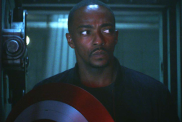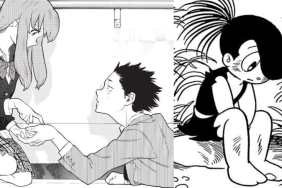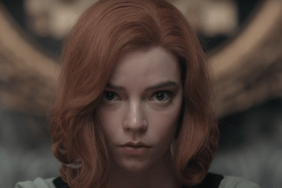
I wish I could sit back and randomly throw things at you as you read this review, or blast noise through your computer’s speakers at random just so you would have an idea of what kind of “scary” movie The Woman in Black is. Just imagine how hard it would be to read this if you were consistently worried about what I was going to throw at you next.
Jump scares are the play here and they take away from the fact this is a decent supernatural story with plenty of atmosphere and a solid little tale at its core. Too bad it’s marred by loud noises out of nowhere and a final five minutes that only prove Drag Me to Hell did it much better.
Adapted from Susan Hill’s 1983 thriller by Jane Goldman (X-Men: First Class), The Woman in Black is set in the early 1900s and centers on Arthur Kipps (Daniel Radcliffe), a young lawyer assigned a task in the small town of Crythin Gifford to settle the affairs of the recently deceased owner of the Eel Marsh House.
This is sort of a last chance for Arthur whose wife passed away while giving birth to their son a few years back, which found him growing more and more detached to the point even his son draws pictures of him with a frown on his face. The bills are beginning to pile up and he’s determined not to lose his job and try and find some joy in his life. So he hits the rails for Crythin Gifford with plans for his son and the nanny to join him in a few days, once his work is completed.
As Arthur travels across the English countryside, director James Watkins is already setting the mood. The train passes through the night with its cloudy plumes blotting the sky in thick inky blotches, and this is just one example of the atmospheric appeal The Woman in Black has to it. It’s both beautiful and haunting and these foreboding qualities end up being its number one attribute as is evident in these early scenes and later in the dark corners of the Eel Marsh House.
Upon Arthur’s arrival in town it’s immediately evident he’s not welcome. He’s handed a folder of papers and told he cannot visit the house, which stands secluded from the rest of the town and cut off for a few hours each day by the incoming tide. It’s as gloomy and unwelcoming as any house you’ll see in such genre films and if you combine that with the attitude of the local population you immediately have to wonder why Arthur doesn’t ask more questions before going about his business.
Sure, I understand his job may be on the line and the debt is piling up, but he could at least ask why these people are acting like such loons. But he doesn’t, so we carry on… off to the house where the story unfolds and, despite seeing some pretty crazy things, Arthur isn’t going home until the job’s done. Oh, it’s also here where the endless barrage of loud noises begin to assault your ears.
I’m sorry if it sounds like I’m beating a dead horse, but the first jump scare in this movie is dirty water pouring out of a rusty faucet as if it had been shot out of a cannon. Boom! Water! Look, it’s dirty! Ewwww. But wait, it’s not scary, it’s just loud. It’s like being constantly hit with a defibrillator and yelling at the doctor to tell him you’re alive just before he yells, “Clear!” once again and hits you with another thousand volts. I was never legitimately scared by the story, only pounded into submission by loud noises.
Otherwise, the handling of the story is quite satisfying as Watkins keeps the mystery close to the chest and even in the end doesn’t beat us over the head with exposition, instead opting for a satisfying scene between Arthur and a woman haunted by the death of her son played by Janet McTeer. Unfortunately, even that is mildly squandered as the final moments of the film play for for about two minutes too long.
Radcliffe is serviceable in the lead role, though I never quite bought the idea of him as a father or even a lawyer for that matter. Ciaran Hinds gets the film’s only other meaty role outside of McTeer and he does just fine, but his character is just one more example of someone in the film that could have given Arthur a heads up as to what he was getting into. Instead, he’s chosen to ignore the situation and hope things don’t get any worse. To tell Arthur about it would be to acknowledge the possibility something actually is wrong. It’s a narrative trick most will likely overlook, but when no one is helping this kid out I had no choice but to either be frustrated with him for not asking what the hell was going on or everyone else for not offering up the information willingly.
The Woman in Black has an interesting little legend to tell, but I had a hard time getting over the annoying use of worthless scares, which distracted from what was in fact a solid story. Whether they felt they needed those scares to ramp up the intensity or they felt the movie wasn’t scary enough without them I’ll never be sure, but it appears to me they just didn’t have enough confidence in their story and felt they needed something more to make it more memorable. I say cut those bits out, add a little logic and snip a couple of minutes off the ending and you may have a top notch genre flick on your hands. As it is, it’s just average.









